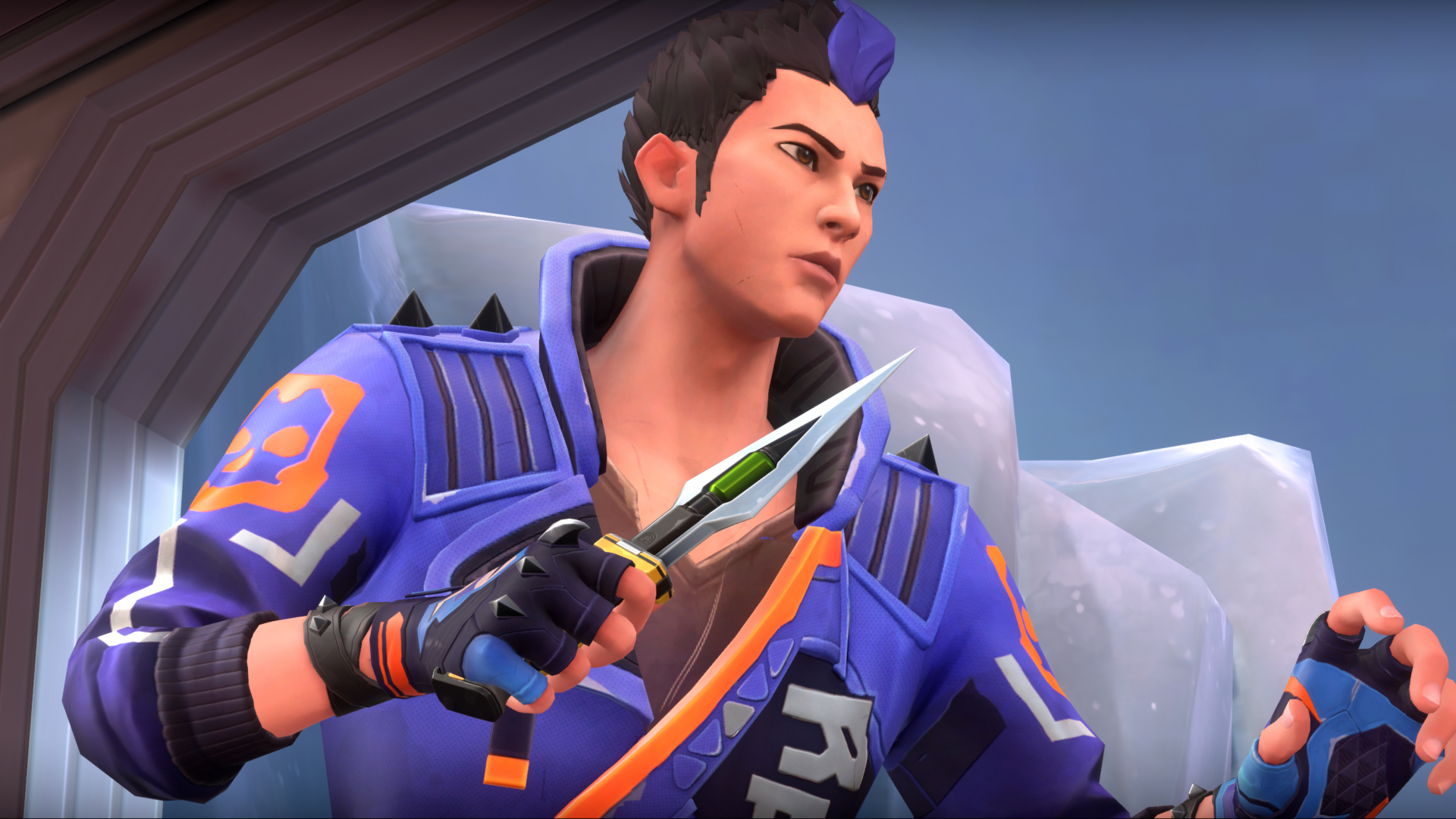Valorant’s next agent is going to kick my ass
Yoru can turn off my eyes, lie to my ears, and disappear at will.

I fell off Valorant hard last year. Only a few months after loving it enough to give it a 90% in my review , gripes about overwhelming agent abilities and Riot’s resistance to counterplay had my friends and I drifting back to our FPS mainstays. That hasn’t changed, but Yoru, Valorant’s new reality-bending Japanese duelist, is threatening to drag me back in anyway.
Every piece of Yoru’s kit is destined to make you feel cool at some point in the round. He plays like an unholy spawn of Phoenix and Omen—sneaking into sites with his quick long-range teleport and bouncing flash grenades around corners to leave enemies helpless. Here’s a full list of Yoru’s abilities, so you know exactly what we’re dealing with.
- C - Fakeout: Equip an echo that mimics footsteps when activated. FIRE to activate and send the echo forward. ALT FIRE to place an echo in place. USE the inactive echo to send it forward.
- E - Gatecrash: Equip to harness a rift tether. FIRE to send the tether out moving forward. ALT FIRE to place a tether in place. ACTIVATE to teleport to the tether's location
- Q - Blindside: Equip to rip an unstable dimensional fragment from reality. FIRE to throw the fragment, activating a flash that detonates after it collides with a hard surface.
- X - Dimensional Rift: Equip a mask that can see between dimensions. FIRE to drift into Yoru's dimension, unable to be affected or seen by enemies from the outside.
Calling Yoru a duelist undersells just how completely he can dominate 1v1s.
Calling Yoru a duelist undersells just how completely he can dominate 1v1s. Need to be in two places at once? Mark a location for his Gatecrash teleport and quick zap back to it when needed. Want to fake a push into a bombsite? Fakeout sends a straight line of extremely convincing footsteps wherever Yoru points. Need a fresh start to a bad round? Pop his ultimate to go invisible and reposition for free. He’s not quite as sturdy as the HP vampire Reyna, but he has way more options to think his way out of sticky situations.
Consider the scenario in the gif below. We’ve planted the spike and it’s 1v1. With no armor and a pistol, I’d rather not squander the advantage by rushing the enemy’s defusal and hoping I win (against the highly-skilled Valorant influencers that made up the preview event I attended, it was a slim chance). Instead, I sent a barrage of fake footsteps toward the spike, distracting the other Yoru long enough to stop defusing and run out of time looking for me. “The sound bait was so good, it got me,” he said after the round ended.
It’s wild that Yoru gets to lie to the entire enemy team at once. Sound is your primary source of information in Valorant and an agent who betrays that understanding is a major shakeup to the status quo. Yoru forces players to carve out a new corner of their brain that is constantly wondering, “Are those fake steps, or real ones?”
That is, unless you listen very closely. In my testing, I noticed that Fakeout footsteps are a little off. The fake steps are missing the distinct cloth-rubbing and boot-crunching sounds that the real ones have. The difference was obvious in a side-by-side test, but it was nearly impossible to tell them apart in the chaos of a real match. Time will tell if the average player will build an immunity to the trickster or if even the pros will chase after false steps. Worst case, I can see the constant second-guessing eroding my patience.
His other major ability is the Gatecrash teleport. It’s not as immediate as Omen’s “point and go there” teleport ability, but it’s way more flexible. Left-clicking sends the gatecrash marker forward until it hits a wall and stays there. The marker is invisible to enemies until they get within a few meters. From there, they can destroy it with a few shots or wait for Yoru to return for a free kill (similar to Phoenix’s Run It Back ultimate, except Yoru doesn’t have to return). Like the best Valorant abilities, Gatecrash will only get better as smarter people than me find creative ways to use it on every map.
Keep up to date with the most important stories and the best deals, as picked by the PC Gamer team.
The only real downside of Yoru is that Riot is adding another pair of flash grenades to an ability pool that is already drowning in blinds, disables, and area-denial. Working around well-timed abilities is a basic part of the game, but accounting for all of the different flavors of flashes, stuns, and smokes is starting to get overwhelming.
For instance, blinding abilities can take the form of curving fireballs (Phoenix), wall-piercing charges (Breach), floating eyeballs (Reyna), or free-flying birds (Skye). With Yoru’s Blindside, you can now add “invisible flash that becomes visible when it bounces off a wall” to the list. I’d love to see Riot adapt to its deepening meta by embracing dedicated counters. You can technically avoid any of these flashes by simply looking away, but that’s increasingly difficult as they can be quickly spammed in every direction. The fourth time I got thoroughly blitzed by Yoru’s bouncy flash balls I started yearning for Warden’s flash-cancelling smart glasses from Rainbow Six Siege.
Maybe my deep-rooted preferences are showing as a longtime Siege player, but I love the way that game's expansive roster of over 50 operators has made room for niche characters that mainly exist to thwart others. Halting an enemy’s well-laid plan with your own counter-cleverness is a thrill that I wish I felt more in Valorant.
Yoru is a nice reminder that Riot is really good at making mundane tools fun to use, though. Even if his kit is mostly a curated remix of existing abilities, it’s still fun after several hours to bank his bouncy impact flashes through a window to blind an entire alley. He’ll be a frequent pick of mine when Act 2 drops. I still struggle with Valorant’s bouncy recoil, but at least with Yoru I’ll have the chance to catch a few enemies by surprise.

Morgan has been writing for PC Gamer since 2018, first as a freelancer and currently as a staff writer. He has also appeared on Polygon, Kotaku, Fanbyte, and PCGamesN. Before freelancing, he spent most of high school and all of college writing at small gaming sites that didn't pay him. He's very happy to have a real job now. Morgan is a beat writer following the latest and greatest shooters and the communities that play them. He also writes general news, reviews, features, the occasional guide, and bad jokes in Slack. Twist his arm, and he'll even write about a boring strategy game. Please don't, though.

